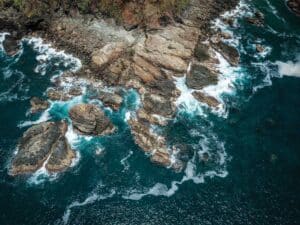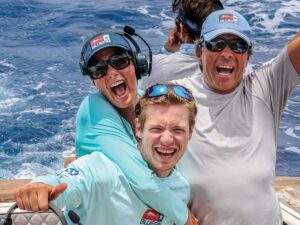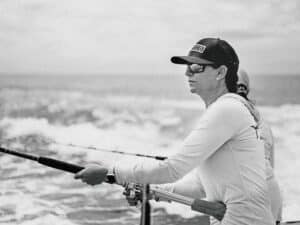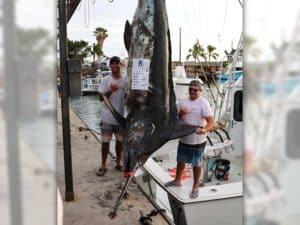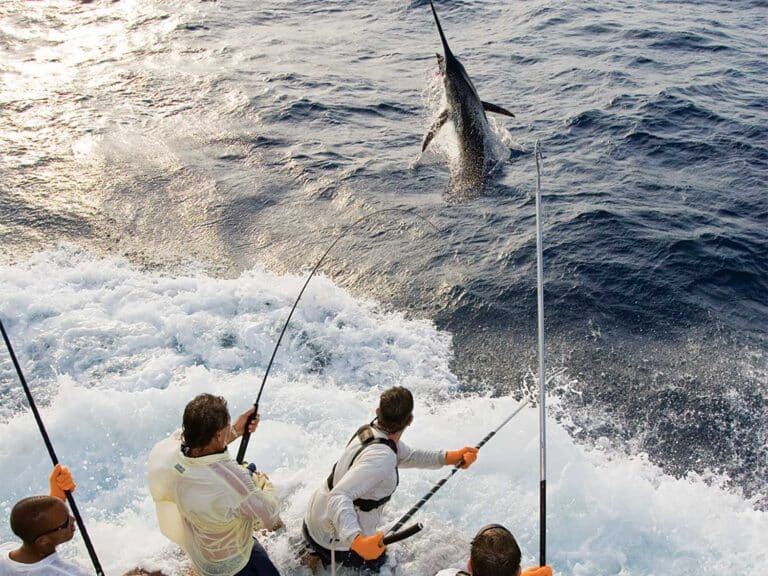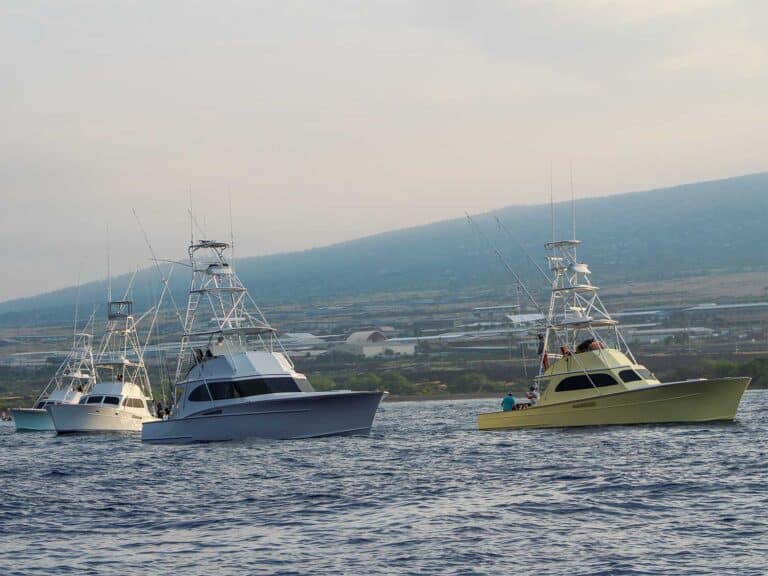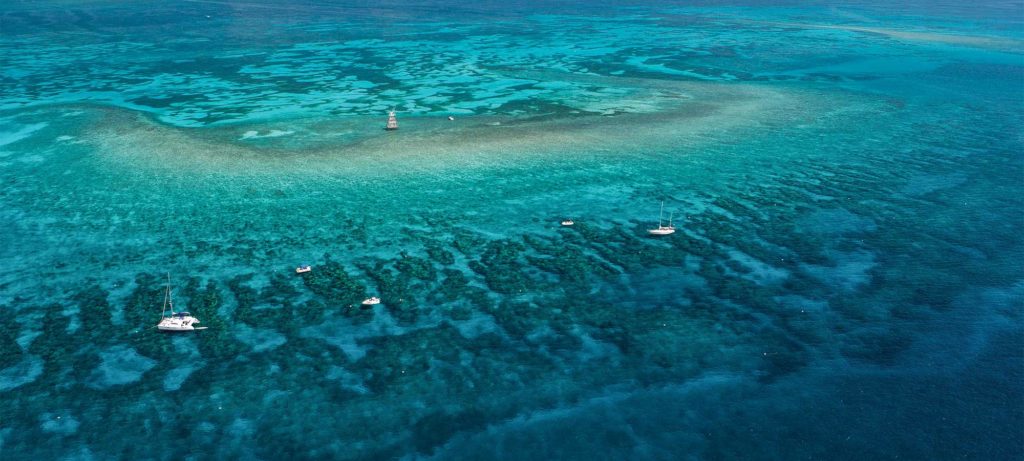
Having worked as a captain in North Key Largo for almost 20 years, I have been up and down these fabulous Florida Keys both fishing and showing my boss and his guests the sights and tastes along the way. When this week’s cold front makes way for the next wave of sailfish to push into the area, there are plenty of what-to-do-when-it’s-blowing activities to pass the time. So whether you want to take your own boat down, charter your way through or tow a center-console for a serious road trip, spending a winter season in the Keys is a great way to gain some memorable experiences, on and off the water.
North Key Largo25° 18′ 42″ N, 80° 16′ 46″ WAt 33 miles long, Key Largo is the largest section of the Keys archipelago. Its claim to fame started in 1948, when the movie Key Largo, starring Humphrey Bogart and Lauren Bacall, came to town to film setting and background shots, even though the actual movie was shot in Hollywood, California. The hype caused the town, from the northern part of Rock Harbor down to Tavernier, to change the name of the post office in 1952 just to bear the words Key Largo in its postmark. Fancy.
Key Largo starts the Keys’ southwest curve toward the Gulf of Mexico, from the Everglades National Park to the northwest and John Pennekamp Coral Reef State Park to the east, which marks the northern boundary of the only living barrier reef in the continental United States. Key Largo is also one of the first places southbound sailfish stop to feed — sometimes for weeks.
A word of caution: When navigating in the Keys, remember there are rocks and coral heads lurking in the shallows, and these surprises don’t always show up on the charts. Just bring your Bahamas navigation skills with you and keep in mind the reef is not as forgiving as sand or grass, and it’s also protected.
Where to Stay
The choices for big-boat marinas are slim in Key Largo. I would only suggest two places: Ocean Reef Club on the northern tip, and Marina del Mar at mile marker 100 in town.
Ocean Reef is a private club, and yes, it does require a member sponsorship if you are visiting, but it’s well worth the hassle. The marina is world-class, as are the accommodations, and the channel is deep (aside from one rock in the middle, which is marked and best coasted over at low tide). Whether you want to stay in the newly renovated hotel, on your boat in the marina, rent a house or condo of any size, or book any one of the numerous inshore or offshore charters, Ocean Reef Club can accommodate you. Just remember that the club is 70 years old, steeped in tradition and is generally a quiet community, so if you have a boatload of up-all-nighters, you might want to stop in Miami for the first leg of your journey south, or just head straight to Key West.
Marina del Mar Resort and Marina provides both rooms and suites, some overlooking the attached 77-slip deepwater marina. A 60-footer should have no problem getting in and out, most of the time.
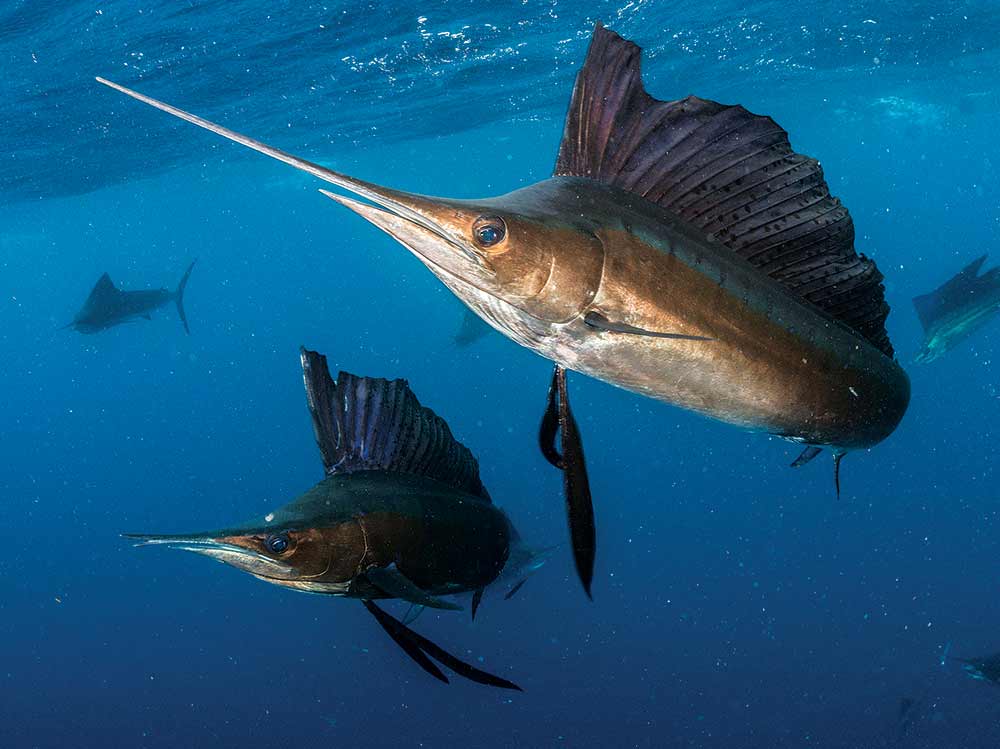
Where to Fish
Compared to the rest of the Keys, Key Largo receives very little fishing pressure. The bait is plentiful, and the sailfish shower ballyhoo in the shallow water inside the reef line for most of the winter. Even on the weekends, the most congestion to contend with is a line of boats fishing for yellowtail snapper on the reef’s edge.
Out in front of Ocean Reef Club, there are hundreds of reef patches to catch bait on, most of which are only 3 miles away. The club maintains mooring buoys to minimize anchor damage to the protected bottom, and they are oriented mostly for baitfishing in anything but a west wind. Ballyhoo swarm these areas beginning in the late fall and through the winter, usually thinning out in February, and sardines can sometimes be found in the sand on flat-calm days.
Read Next: Florida Keys Sailfish Fishing and the Lost Art of Live Ballyhoo
Another 3 miles out, the deeper reef edge begins in 45 to 60 feet, and it is there that some of the best fishing in the Keys can be found. Sailfish travel in and out of the cuts in the reef throughout the day, so the likelihood of an encounter by sitting on the edge or looking around in the sand is good. A bonus: Blackfin tuna and mahi are practically a daily occurrence, even in the shallow water.
Islamorada
24° 92′ 43″ N, 80° 62′ 78″ W In 1513, Spanish explorers sighted the islands, naming them Islamorada: the Purple Isle. The Village of Islamorada consists of six Florida Keys — two are a part of the Florida State Parks system, and one, Tea Table Key, is completely private — that are located just about a third of the way down the island chain.
A popular tourism destination, Islamorada boasts one of the finest charter fleets in the United States. With charter operators and guides at almost every marina, you will have no problem finding someone to take you out for a great day on the water.
Dockage throughout most of the Keys is always a conundrum. The water surrounding these islands is shallow and mostly rocky, so unless you draw less than 4 feet, you will eventually have a problem. If you are bringing your big boat, investigate houses for rent with deepwater canal dockage inside Snake Creek or in the bay. I found several houses online, and they seem reasonably priced for the amenities they offer.
Where to Stay
One place I’ve always wanted to stay in Islamorada is a former coconut plantation called the Moorings Village. On the ocean side, the Moorings is home to 18 acres of beautiful palm-studded beachfront property with 18 private villas nestled among the trees. If quiet and tranquil is what you want, this is the place.
Just across the Overseas Highway, on the bay side, is the sister property of Morada Bay — home of the best full-moon party in the Keys — and Pierre’s Restaurant, which mirrors the plantation-style environs and is known for its elegant atmosphere, breathtaking sunsets and sophisticated French-fusion cuisine.
Another 30 miles south, on Duck Key, is the Hawk’s Cay Resort and Marina. The resort has been closed for a year due to havoc caused by Hurricane Irma, and is scheduled to reopen by the time this issue goes to press. The marina construction is underway, but an exact reopening date could not be verified. However, the small-boat basin for vessels less than 32 feet is up and running.
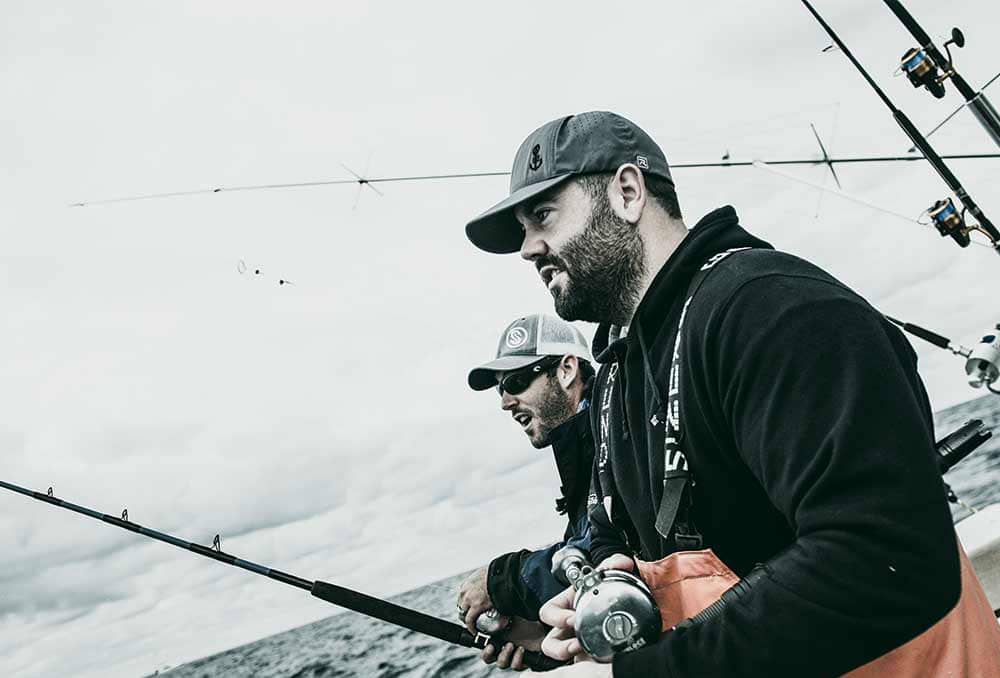
Where to Fish
Fishing anywhere in the Keys is usually within 10 miles of land. Just offshore of Hawk Channel — which runs close to shore from Key Biscayne down through the length of the islands — is a shallow barrier reef line, dotted with coral spurs and sand grooves, grass patches and sandy areas worthy of investigation when hunting for live bait.
A friend of mine has what he calls the bait sweep, locations he makes a point to hit: inside Davis Reef, southwest of the marker; Crocker Reef, which the locals call E Marker, although there is no marker there; and just north of Alligator Light. Immediately offshore of these spots is also a good place to start sailfishing.
Sight-fishing for sailfish is great in Islamorada, with miles of shallow-water sand channels running parallel to the shoreline. When the edge is slow, I will sneak in there and wait for them to come to me. Since sails are almost always on the move, you can find a few good batches of fish that way. The Eagle wreck is also a good spot to fish, since the sails are almost always there, but whether they bite or not is another story.
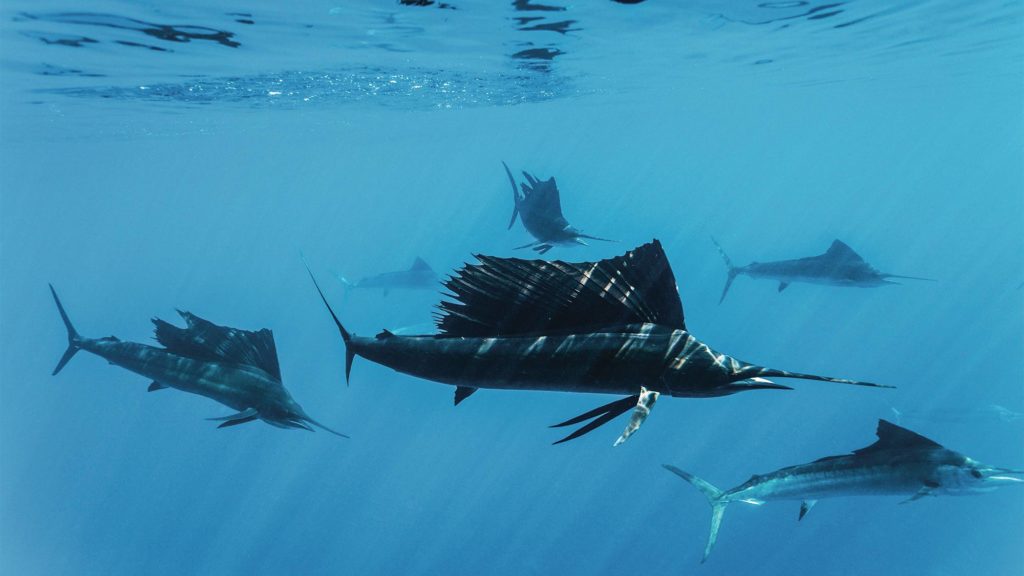
Key West
24° 33′ 33″ N, 81° 47′ 03″ W As Juan Ponce de León made landfall in 1521, Bone Cay, the literal meaning of Cayo Hueso, was believed to be the westernmost key with a reliable water source. Rumor is the island was used as a communal graveyard by native inhabitants and perhaps is the basis for the island’s direct link to the paranormal, ranking the Conch Republic as one of the most haunted cities in the continental United States.
For sailfish enthusiasts, Key West is mostly a springtime fishing spot — one of the last big bites occurs here each spring, and the threadfin herring are plentiful. Many teams come here to catch the last of the South Florida sailfish tournament circuit before peeling off to the Bahamas or Isla Mujeres, Mexico, afterward.
Where to Stay
For a big-boat operation, you can’t get much better than Key West. At Key West Bight you’ll find dockage and lodging, but if you’d rather get out of the hustle and bustle of Key West’s Mallory Square shenanigans, I suggest the Oceans Edge Resort and Marina on Stock Island. With a casual Keys vibe, Oceans Edge is close enough to take in the culture of Duval Street via one of the complimentary shuttles the resort provides.
Oceanside Marina is widely considered to be Key West’s finest, offering dockage for vessels up to 140 feet and 111 wet slips, with a controlling depth of 12 feet, making it perfect for mothership operations.
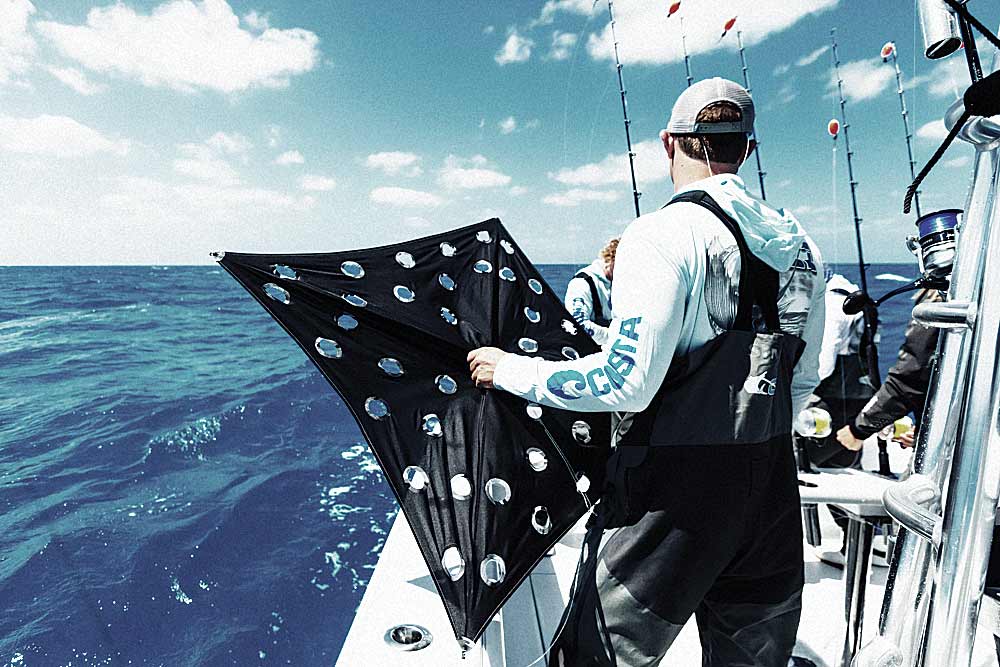
Where to Fish
The shallow-edge fishing we normally enjoy in the upper and middle Keys seems to somewhat go by the wayside in Key West. While we enjoy a reef ledge, Key West actually has two ledges in a few places — an inner and outer reef line, with a deep gully running between them.
The choices of bait in Key West are the same as the rest of the Keys. Threadfin herring can be found on the range markers — as can cigar minnows — surrounding Key West, specifically the Gulf side of the Northwest Channel, as well as the markers in Hawk Channel. Ballyhoo are on the shallow reefs and ledges on both the Atlantic and Gulf sides.
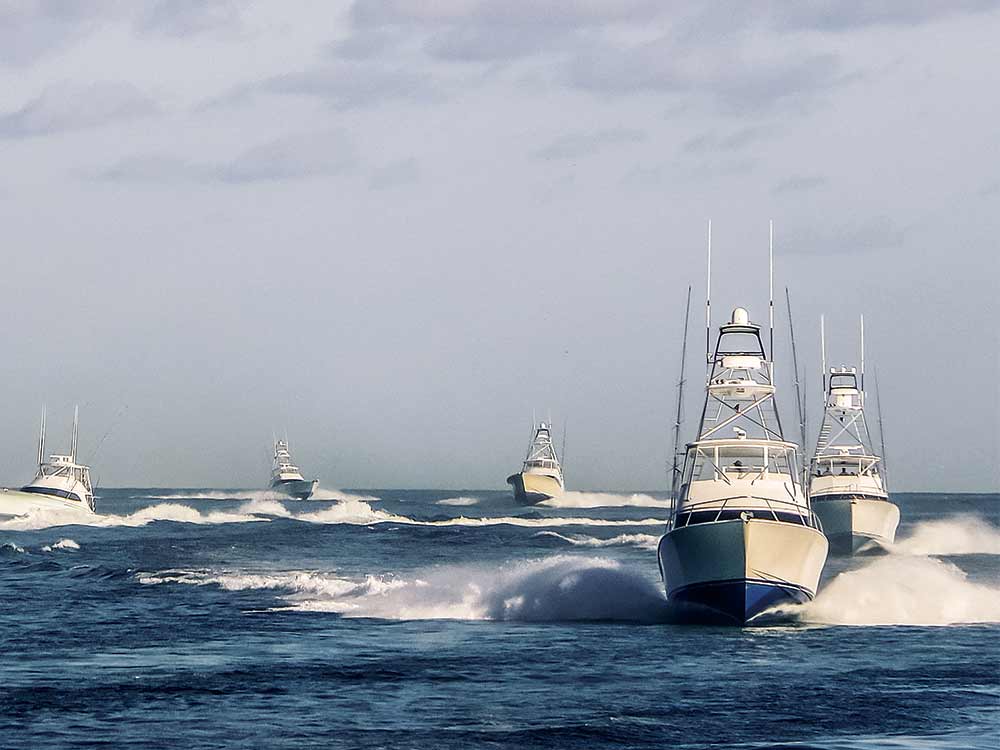
In Key Largo, we have what we call the Spot — a place in the reef where the sails seem to congregate when the bait is pushed up against it. In Key West, one of those spots is Sambo Reef.
Sambo — Eastern, Middle and Western — has a double reef line lying directly southeast of Key West and a few miles east of the ship’s channel. The bottom is mostly flat, with a well-defined 80- to 90-foot depression running off and on between Maryland Shoal to the east and past Sand Key to the west called the Bar. This gully is flanked on both sides by reef — a perfect bait-trapping scenario. But as great as Sambo sounds, there are those days where clear water and an east current are the conditions to find when trying to tackle Key West sailfish.
There’s a reason why so many fishermen who come to the Florida Keys never leave: They don’t need to. In the span of one winter offshore season — generally from November through April — you can easily have shots at hundreds of sailfish, hordes of tunas, swarms of dolphin, the occasional pack of wahoo and some ridiculous deep- and patch-reef fishing on the side. It’s an easy place to love.
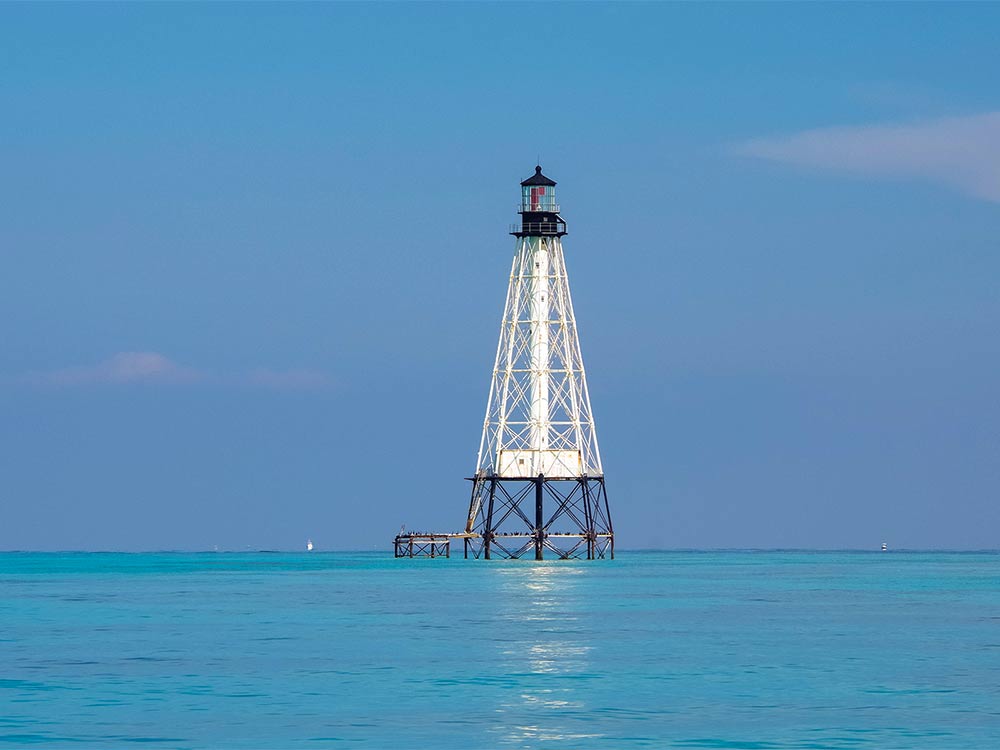
The Light Bite
The Florida Keys has five 19th-century lights marking its major reefs: Carysfort Reef, Alligator Reef, Sombrero Key, American Shoal and Sand Key. The lights were constructed to relieve light ships that would anchor outside the reefs to warn sailors of the shallows, but were decommissioned in 2015 by the Coast Guard and are no longer maintained. With the proximity of the shallow reef to the deep edge, combined with large quantities of bait, you’ll normally find feeding sails patrolling where the wind and tide push the bait against the drop-off, which is largely distinct and pronounced.
What to Do When It’s Snotty
Like clockwork, the winter cold fronts appear almost weekly, and occasionally, there will be a day or two where you get blown out. These land-based activities are a sure way to keep your crew engaged.
The Upper Keys
Probably the most famous place in northern Monroe County is the hurricane-defiant Alabama Jack’s. Located in “downtown” Card Sound, AJ’s has been a Keys landmark since 1953, when Jack Stratham bought the lease from a Miami plumber. Sitting on the waterway south of the road and accessible by car or boat, Alabama Jack’s is an open-air gathering place and a favorite watering hole for those looking for good conch fritters and a cold beer or three.
The Middle Keys
Your friends will thank you when you take them down the time-worn docks of Robbie’s Marina at mile marker 77.5. Some 18 years ago, Robbie and his wife, Mona, started feeding a tarpon they named Scarface, which Robbie rescued on a nearby flat, its right jaw severely injured. The tarpon was put in an oxygen-enriched tank and force-fed until it was well enough to be set free six months later. Soon, Scarface was bringing its friends around the docks at feeding time. Today, hundreds of tarpon filter in and out to take advantage of the tourists who hand-feed them daily at Robbie’s. Just don’t take your eyes off your bait bucket — the local pelicans are well-trained too.
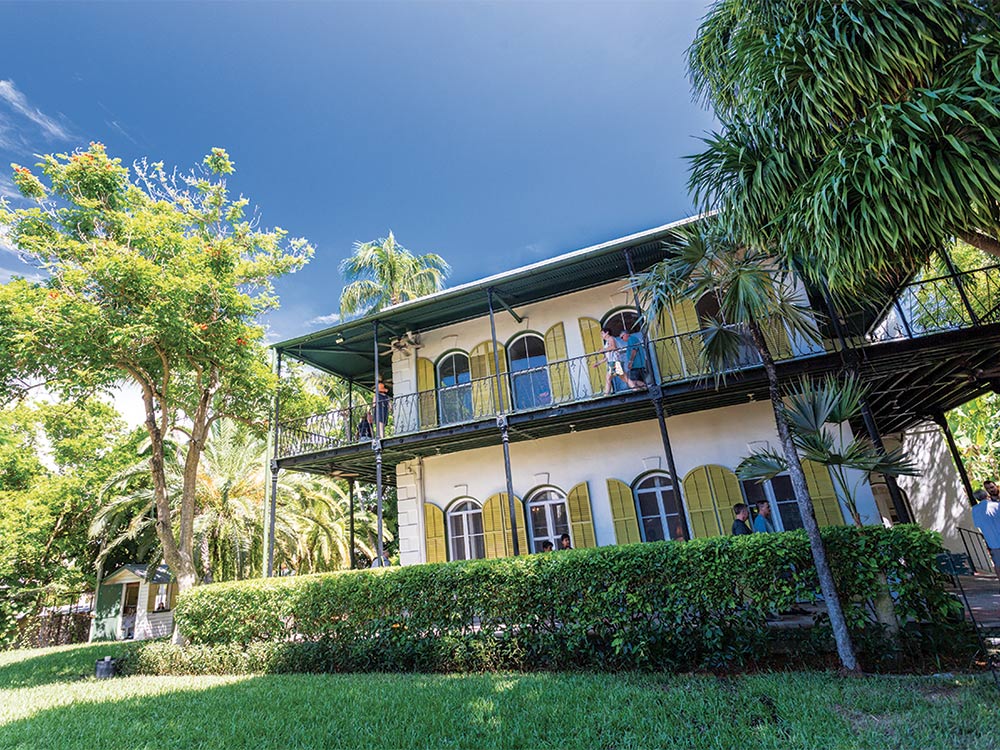
The Lower Keys
From 1931 to 1940, Ernest Hemingway resided and wrote in Key West. Originally built in 1851, Hemingway’s home was constructed from limestone that was dug from beneath the house. It was purchased in 1928 by Hemingway’s wife’s wealthy uncle, Gus, as a gift to the family. Today, it remains the single largest residential property on the island. The estate is a National Historic and Literary Landmark, containing the very furnishings Hemingway and his family used at the time. A stroll through this estate and its all-indigenous tree and flower garden takes you back in time to surely one of the most idyllic settings that existed in the Keys during the Great Depression.
